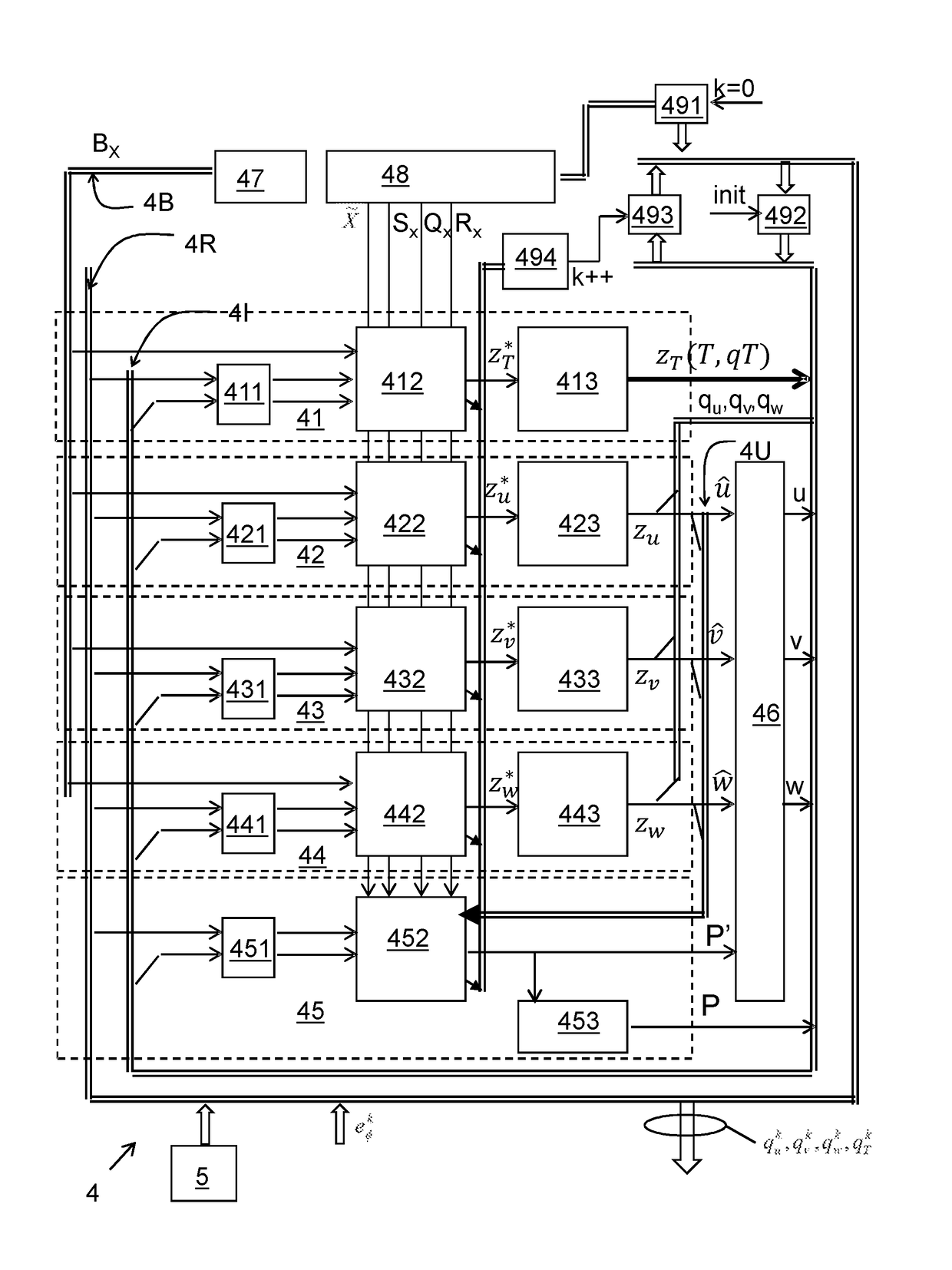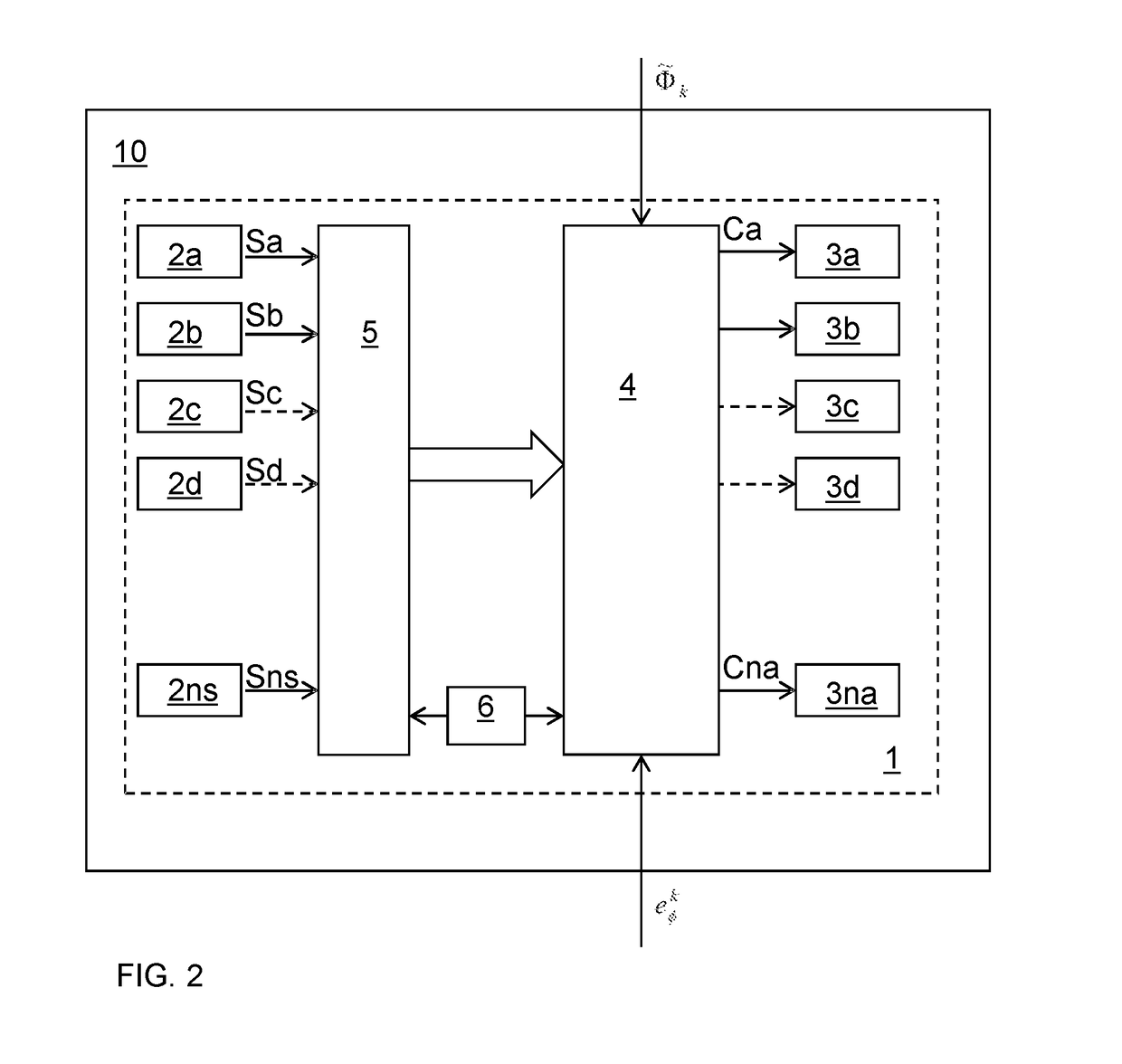Navier-stokes based indoor climate control
- Summary
- Abstract
- Description
- Claims
- Application Information
AI Technical Summary
Benefits of technology
Problems solved by technology
Method used
Image
Examples
Embodiment Construction
[0076]Like reference symbols in the various drawings indicate like elements unless otherwise indicated.
[0077]FIG. 2 schematically shows a climate control system 1 for controlling a climate in an indoor space 10. The climate control system comprises a plurality of sensors 2a, . . . 2ns to sense climate related variables in said indoor space, and to provide sensory data Sa, . . . Sn indicative for sensed values for said variables. The climate control system further comprises a plurality of actuators 3a, . . . , 3na for controlling climate related variables in said environment. A data processor 4, here serving as a controller, controls the actuators 3a, . . . , 3na on the basis of the sensory data Sa, . . . Sns. To that end the controller 4 jointly resolves a set of coupled optimization problems of the following form:
zΦk=arg min([SΦk+1 O]zΦ−{tilde over (Φ)}k+1)TQΦk([SΦk+1 O]zΦ−{tilde over (Φ)}k+1)+([O I]z101)TRΦk([O I]zΦ) (5a)
Subject to └AΦk −BΦk┘zΦ−b′Φk(Φk,eΦk)=0 (5b)
Therein,
[0078]z...
PUM
 Login to View More
Login to View More Abstract
Description
Claims
Application Information
 Login to View More
Login to View More - R&D
- Intellectual Property
- Life Sciences
- Materials
- Tech Scout
- Unparalleled Data Quality
- Higher Quality Content
- 60% Fewer Hallucinations
Browse by: Latest US Patents, China's latest patents, Technical Efficacy Thesaurus, Application Domain, Technology Topic, Popular Technical Reports.
© 2025 PatSnap. All rights reserved.Legal|Privacy policy|Modern Slavery Act Transparency Statement|Sitemap|About US| Contact US: help@patsnap.com



